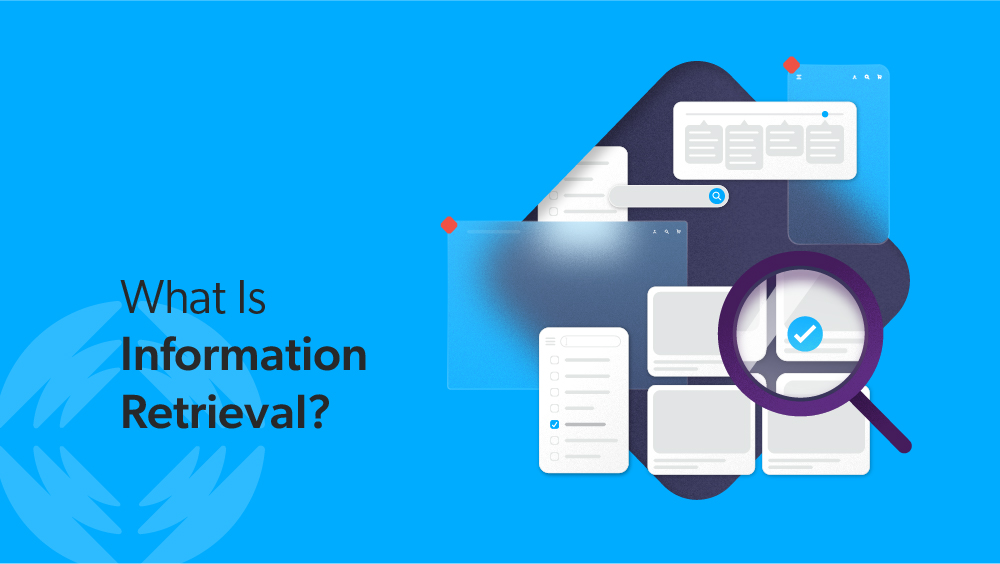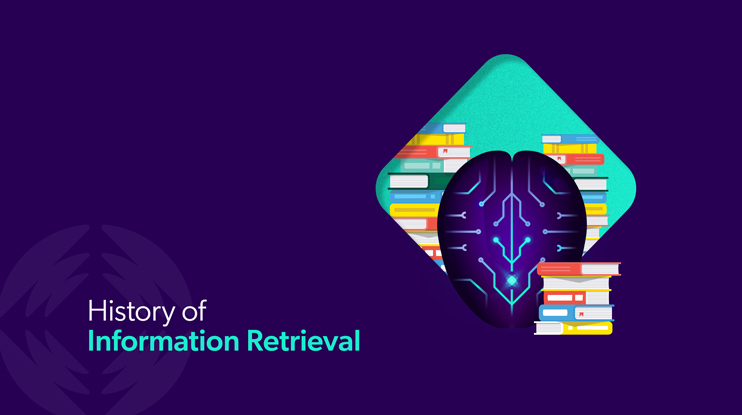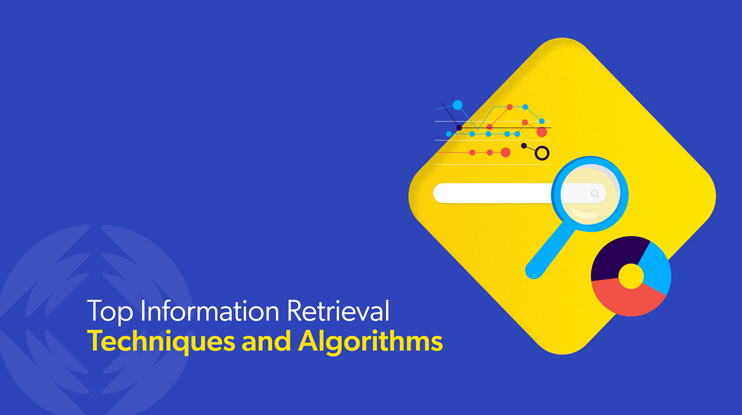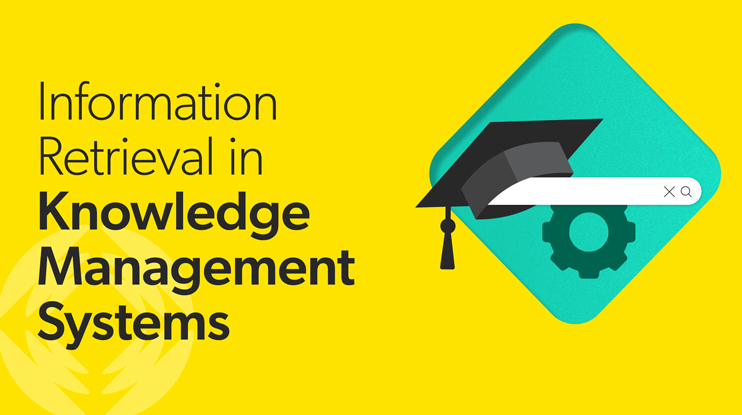To thrive in today’s competitive business atmosphere, companies must do more than just keep pace — they must actively embrace technological advancements, make data-driven decisions, and cultivate a customer-focused orientation.
Enterprises now encounter unique challenges and opportunities as they navigate vast datasets of digital information, which continue to grow exponentially. This is where information retrieval techniques become pivotal. As a critical mechanism, document retrieval — often referred to as search — enables enterprises to cater to modern business demands within an information-rich context. It serves as a unified platform that facilitates access to diverse information and documents, enhancing the user experience for employees and customers alike.
Innovations in artificial intelligence, machine learning, and big data herald a future where information retrieval is increasingly intuitive, precise, and personalized, aligning with the expectations of a digital, data-heavy world. With these advancements, information retrieval continues to evolve, leveraging emerging technologies and techniques to meet user needs effectively.
AI and Machine Learning: Redefining Search
The integration of artificial intelligence (AI) and machine learning has revolutionized text retrieval, enriching user experiences with more relevant, accurate, and personalized search outcomes. AI-driven information retrieval systems continuously learn and adapt, discerning user intent and refining precision with every interaction.
In contrast to traditional systems that rely predominantly on keyword matching and excel with a simple user query, AI approaches triumph over complex searches by effectively handling synonyms and polysemous terms.
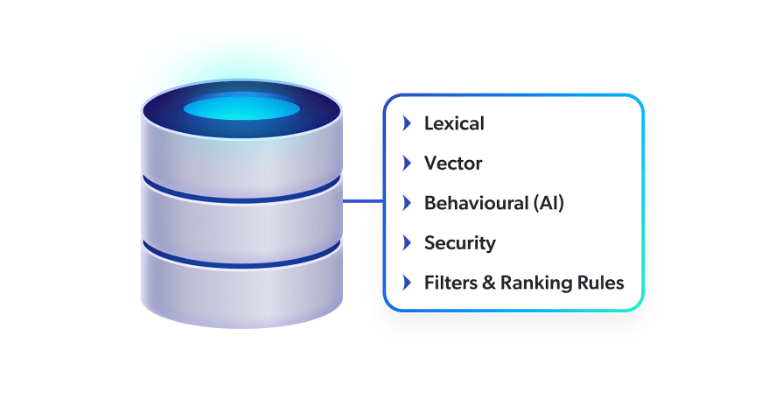
By incorporating advanced AI technologies, modern retrieval methods utilize natural language processing (NLP) and sophisticated ranking algorithms to understand user intent and query context. This allows them to analyze vast datasets and deliver pertinent results. The evolution of NLP and deep learning, which replicate neural structures to identify data patterns and relationships, plays a critical role in shaping the future of information retrieval.
Relevant reading: Enterprise NLP: Why You Need It and What to Look For
These advancements enable the ongoing improvement of highly relevant search results. For example, OpenAI’s GPT underpins generative AI applications like ChatGPT, generating human-like text responses and enhancing performance through user feedback. Similarly, Google’s BERT, a pre-trained language model, enhances search engines’ ability to comprehend query context, leading to improved search accuracy and user satisfaction.
AI-driven information retrieval is redefining enterprise search, accelerating knowledge sharing and increasing efficiency. In customer service, AI-powered search enables human support agents to promptly retrieve information necessary to address customer inquiries, factoring in the customer’s profile and history to provide contextual responses. Additionally, internal teams benefit from rapid, precise access to knowledge bases, fostering collaboration and enhancing operational efficiency across systems.
Conversation Search: The Next Frontier
One of the key areas of growth in the future of search is conversational search, which includes voice assistants and chatbots that allow users to interact with an information retrieval system using intuitive, natural language.
The introduction of conversational AI such as ChatGPT has changed the way we interact with information. Large language models are trained on vast amounts of data that help them process patterns in language. As a result, these models possess the ability to understand natural language and engage with users in a human-like manner.
Combining LLMs’ ability to engage users more naturally and an advanced search system allows users to express their questions more naturally, and in turn receive more accurate and relevant results. In conversational search, a user can go back and forth with the system in a question and answer format that refines the query and arrives at better retrieved results, which departs from the traditional format of answering queries with a list of ranked items.
Initially popular in consumer applications, conversational search is increasingly important within enterprises in areas such as knowledge management and customer self-service. Conversational search using AI boosts access to organizational knowledge, allowing workers to look for internal information in an intuitive, efficient way through asking questions of chatbots. This type of search can also greatly enhance customer experience, providing swift product-related answers with relevance and detail that educates the customer and increases the likelihood of future purchases.
Generative AI: Going Beyond Search
Generative AI is a form of machine learning that is trained on large datasets and uses deep learning techniques to create entirely new content. Applied to information retrieval, generative AI takes search experiences beyond just a list of results.
In response to queries, large language models, a type of generative AI focused on language, can create summaries, translations, recommendations and actionable insights through human-like responses. This type of search functionality benefits scenarios involving complex questions with comprehensive answers or needing quick insights rather than sifting through a list of results.
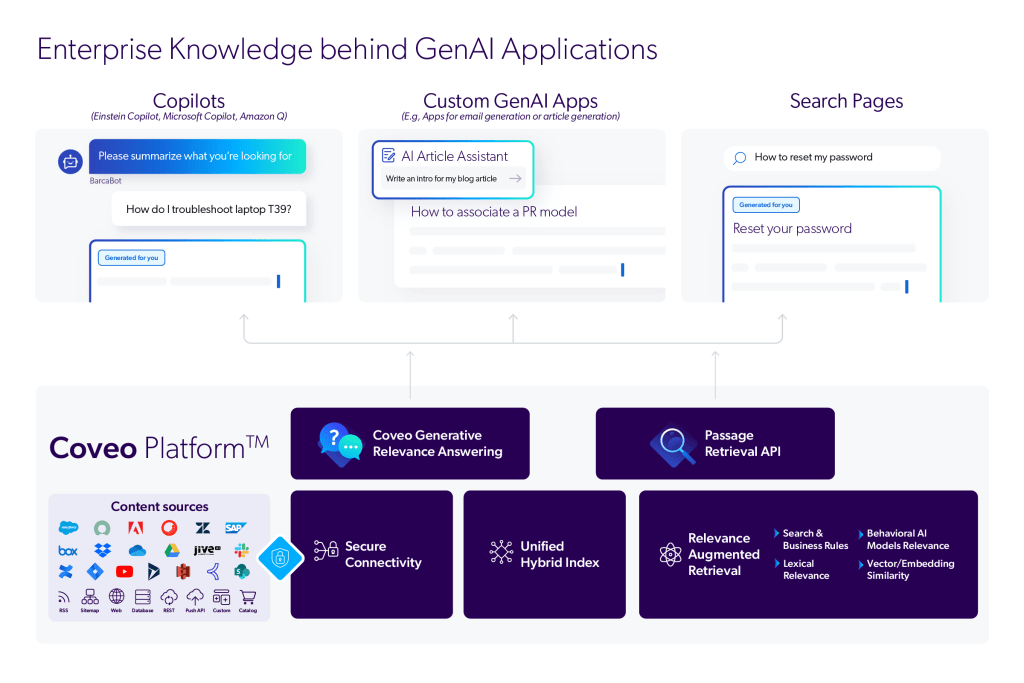
For example, customer service agents can answer customer inquiries rapidly using an LLM that takes company policies, support documentation and customer data and synthesizes the information into a helpful answer, saving agents time from working their way through a list of links.
Generative AI can also greatly improve customer self-service experiences by analyzing past customer interactions and communicating through a conversational interface so customers can quickly answers they need in a natural and intuitive manner. These AI-powered interactions also have the potential to lead to new applications of search, such as the ability to generate presentations based on third-quarter earnings reports.
Rise of Semantic and Contextual Search
Another key innovation to the future of search is the rise of semantic and contextual search. The ability to use semantics and context in search is a significant step forward in the accuracy and relevance of results, since the system does not solely depend on keywords to find information. Using natural language processing (NLP), AI-powered search systems go beyond traditional keyword matching to recognize the patterns and relationships between terms within their context to understand user intent in a query.
While traditional search requires specific keywords to be present in a query to retrieve relevant information, semantic search finds information based on the context around the query and the nuances in meaning behind words. For example, understanding the intent behind searching for “Rancilio Silvia vs. Breville Bambino Plus” will bring up reviews and comparisons of espresso machine models. Search engines use the context of a user’s previous searches, history and site interactions to improve on the relevance of results.
In the enterprise, semantic search is leading to highly personalized and deeply contextual search experiences. Employees can increasingly expect a search system to understand the intent of their natural language queries, organizational context like their job roles and search history to provide access to more relevant information quickly.
The ability to grasp nuances and greater precision in information retrieval can lead to search systems that can answer strategic and complex queries for the business such as “most successful marketing campaigns contributing to closed won opportunities in Q2.”
Unified Search Across Platforms
Data silos across company applications and platforms are one of the biggest challenges to effective information retrieval. Organizational knowledge is scattered across these silos, leading to many inefficiencies like duplicated or outdated content, and eroding trust in knowledge bases and information retrieval systems.
These silos are a drain on time and productivity as well, with workers spending four hours per week on average readjusting after toggling to a new application, also known as context switching, according to a study published in Harvard Business Review.
Unified search platforms bring together knowledge from various silos, eliminating the need to switch between multiple systems while pulling information from all content sources. At the core of these platforms is a unified index that brings together content from across systems through specific content repositories.
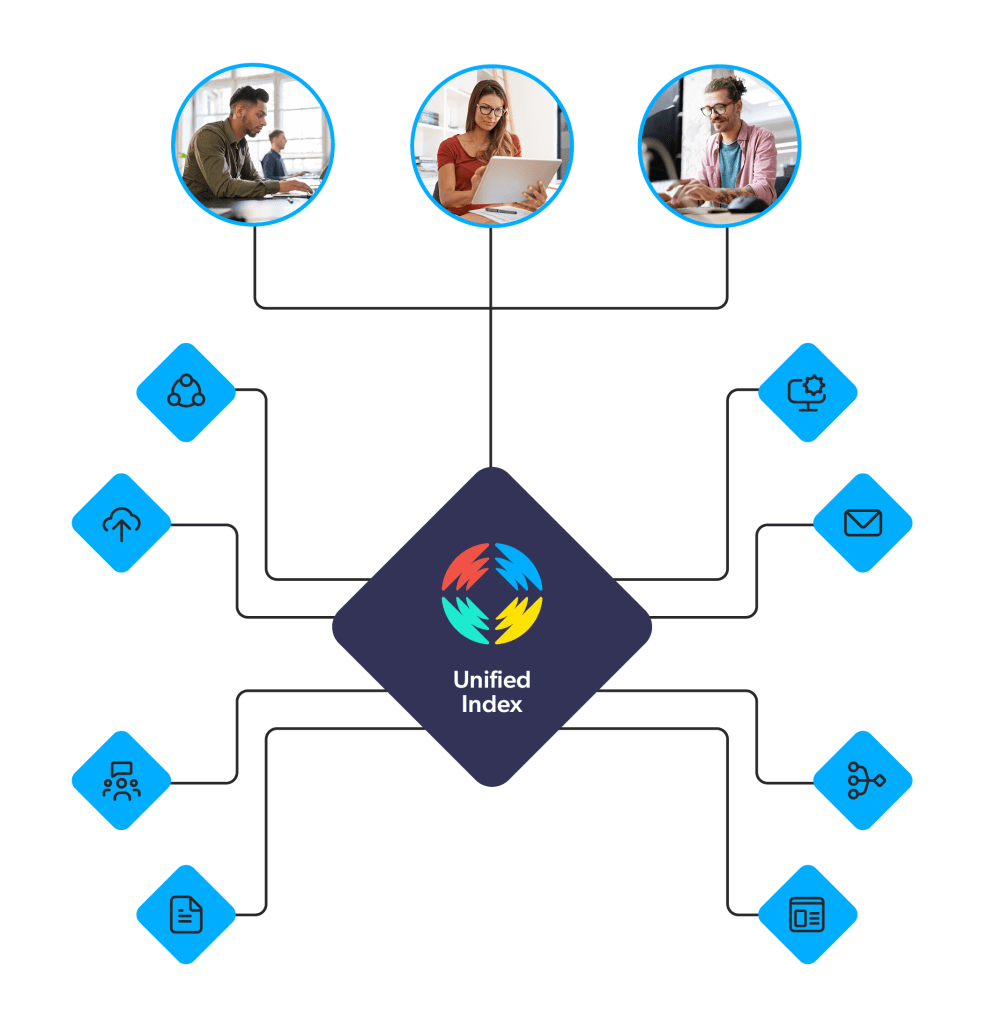
Unified search is becoming a foundational component of AI-powered information retrieval systems. Once silos are broken down and content is flowing from all platforms, machine learning determines the content with the highest relevance to the search query and uses contextual data, such as a customer’s in-session actions, to rank the results. Unified search will also continue to be fundamental to generative AI applications in enterprises, grounding a language model in up-to-date organizational content to generate answers. AI-driven search on a unified search platform will provide cohesive and consistent information, greatly enhancing customer and employee experiences.
Data silos are a big challenge for companies when it comes to finding information. Knowledge is often scattered across different apps and platforms, leading to problems like duplicate or outdated content. This makes it harder to trust knowledge systems and wastes time. Workers spend an average of four hours per week adjusting after switching between applications, a process called context switching, according to Harvard Business Review.
Handling Big Data
In an era of exponential growth in data, also known as big data, AI technologies have emerged as a promising solution to manage and access vast amounts of information efficiently and accurately, which was lacking in traditional information retrieval. AI-driven search uses machine learning, NLP and deep learning to discover and understand the patterns within data, making sense of vast amounts of information that are growing in volume and complexity each day. In this environment, machine learning algorithms and indexing techniques are evolving, allowing enterprises to improve search performance in the face of massive data volumes, a growing number of data sources and expectations for faster performance.
Indexing techniques like compressed inverted indexing, which reduces storage demands and improves query processing, and distributed indexing, which partitions indexing across multiple machines, allow search systems to retrieve information from large volumes of data with speed and accuracy. Incremental indexing allows search systems to update only the changed parts of the indexes instead of performing full indexes that slow down performance.
Additionally, information retrieval models based on deep learning techniques called neural IR models use artificial neural networks to capture semantic relationships between documents and queries, improving the accuracy of searches in large-scale datasets. Transformer-based neural models like Google’s BERT (Bidirectional Encoder Representations from Transformers) use a self-attention mechanism to process large sets of data simultaneously instead of in sequence, making it more efficient when handling massive amounts of information. These neural models use vector embeddings and approximate nearest neighbor algorithms (ANNs) to capture the similarity between data and efficiently process large datasets.
By combining these techniques, enterprises are able to handle large-scale datasets while delivering high-performing search results.
Security and Compliance in the Age of Personalized Search
Developments in AI-powered search have been exciting, and have greatly improved the search personalization and accuracy. At the same time, these advances have also brought a greater need for privacy and security considerations in information retrieval.
Search systems using machine learning algorithms collect and process vast amounts of data to improve the relevance of search results, and may contain personal data such as health and financial information that infringe on privacy. AI models trained on this data are complex and often lack transparency, making it difficult to understand their sources and identify errors or bias.
Enterprises, especially companies in industries with stringent compliance requirements, must establish proper security protocols and frameworks while ensuring they are staying compliant with privacy regulations, such as GDPR. Ongoing monitoring and maintenance of AI systems is necessary to mitigate potential risks while continuing to take advantage of the many benefits of AI-driven search.
Preparing for the Future of Search
Developments in machine learning, natural language processing, big data, and deep learning have revolutionized the scalability, accuracy and semantic abilities of information retrieval systems. More nuanced, personalized search experiences that reflect an understanding of user needs and preferences give enterprises an important competitive edge with customers while improving worker productivity and business operations.
The way humans interact with information will continue to become more intuitive, natural and conversational. As enterprises grow in the volume and complexity of their data, integrating advances in AI and information retrieval into their businesses will help build a foundation for search systems that are strategic, scalable and future-ready.



